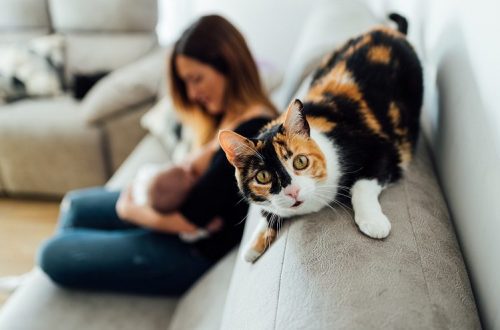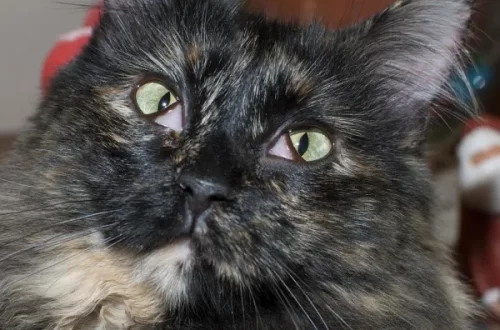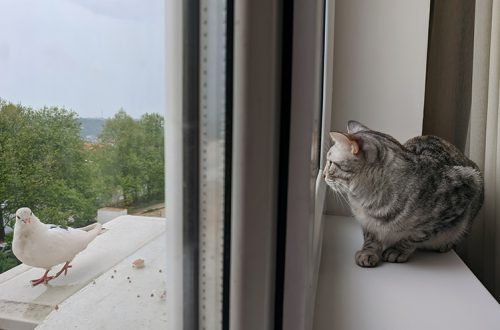
How can I help my cat lose weight?
Worried about your cat becoming rounder or losing weight rapidly? People quickly notice that they have put on weight, especially when their favorite trousers become tight. But when it comes to pets, it’s your responsibility to look out for warning signs if a pet has gotten too chubby. Read on for tips on feeding and caring for a cat that needs to lose weight.
Contents
Development of obesity
Some cats have an innate tendency to be obese, which is noticeable by their body type, and some are only halfway there, because their owners do not pay attention to the corresponding alarming symptoms. The first sign is noticeable fluctuations in weight. Believe it or not, your cat’s sudden weight loss should also be a concern, especially if she’s developing medical conditions that lead to overweight. Some diseases lead to weight gain, while others occur due to excess weight, so the animal is sick and does not feel well. If your cat is showing signs of illness, talk to your veterinarian about weight loss to improve your cat’s overall health.
Another sign that your cat is developing obesity is a constant feeling of hunger. A diet rich in dietary fiber and protein will improve metabolism and help keep her feeling full. The correct ratio of nutrients in the diet of the animal increases the degree of its activity, reduces the number of meals and helps maintain a healthy weight.
Lack of activity
Another alarming sign of overweight in a cat is a decrease in its activity. After spaying or neutering, animals have a slower metabolism, making them less active and reducing their need for higher calorie diets. If you do not monitor the number of calories consumed by the cat, it will gain weight and become obese.
When tracking your cat’s activity level, her age must also be taken into account. As a rule, older individuals become less active, so they do not require much food. If your pet has recently been neutered or spayed, or if they are eating the same amount of food all the time, it may be worth paying attention to their activity level, as overfeeding leads to fatigue and laziness. Sometimes owners who monitor their pet’s food intake and reduce the number of servings (or size) will notice an increase in the animal’s activity as a result. Also check with your veterinarian about a food formulated specifically for neutered or neutered pets, as these foods slow down the metabolism to prevent weight gain.
Don’t overfeed your cat
In order for a cat to begin to lose weight, first of all, it is necessary to control the amount of food she consumes. Your veterinarian can help you choose the right food for your pet’s age and nutritional needs. You should choose a food that contains the optimal combination of nutrients necessary to maintain a healthy life for your pet. Cats should avoid human food, as well as foods with artificial flavors and additives. Confused about which food contains the right types of nutrients or what serving size to offer your cat? First, carefully read the label on the package and review the recommendations (remember that one cup does not mean a cup with a slide). You may want to purchase a measuring cup or cup to keep track of your daily food intake. As a general rule, feeding two to three small meals a day (measured by volume) will help keep your cat at a healthy weight and prevent her from gaining weight.
Once you have decided on your cat’s daily diet, discuss this, as well as the frequency of feeding, with your veterinarian. Although the packaging suggests general guidelines for feeding your cat, no one but your veterinarian can accurately determine the type of food and the amount of food per day needed to lose weight or maintain a healthy weight. Once you have agreed on the amount and schedule of meals, you need to gradually accustom the cat to physical activity (better that it is also fun).
Helping you lose weight through exercise
Changing the diet helps to avoid obesity, but to achieve the best effect, the diet must be combined with physical activity. Unfortunately, you won’t be able to take your cat for a walk or run, but there are many ways to exercise together at home in the comfort of your own home. Cats are carnivores (thanks to wild ancestors), so it’s important to find a way for your pet to combine play and innate instinct. Both the cat and the owner will have fun coming up with creative new games, such as hide and seek or overcoming obstacles, without leaving the house. If you don’t have anything at home for your cat to play with, get some new toys that will keep your cat interested and active. Check out our list of games for your cat to get her moving.
Start with about five game minutes a day. After a few weeks, increase the exercise for weight loss so that the cat is actively moving for about ten minutes a day. Any increase in activity will help her become leaner and closer to a healthy weight. Once your cat gets used to a more active lifestyle, they will enjoy this increased quality of life. And this is exactly what all pet owners want to provide for their pets.
Make an effort to consolidate the results achieved
A healthy weight not only improves a cat’s quality of life, it also saves the owner money. According to PetMD, owners spend millions of dollars a year treating diseases that pets develop due to being overweight. Whether your cat is obese or just showing warning signs of being overweight, or you’re afraid your cat might put on a few extra pounds, start monitoring her food intake and activity levels, which in turn will benefit the whole family. To maintain a healthy weight for a cat, it is necessary to constantly monitor the degree of its activity, as well as regularly visit a veterinarian to assess the animal’s weight and nutritional requirements.
Even the most well-fed cat deserves a chance at a healthy life with the active support of its owner. Don’t worry if your pet is overweight! Take note of our nutritional guidance and moral support ideas and work with your veterinarian to help your cat maintain a healthy weight.





